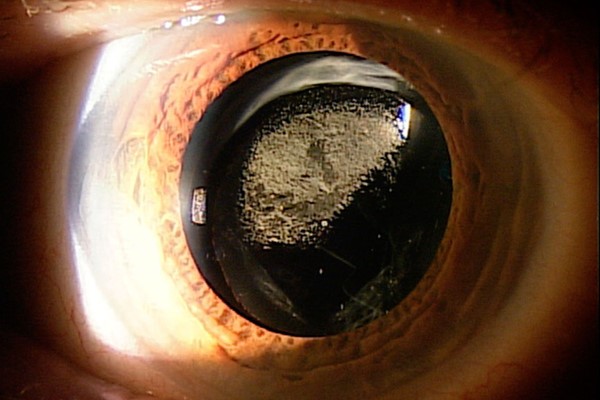YAG laser capsulotomy
What is posterior capsular opacification (PCO)?
During your cataract operation, the natural lens inside your eye, which had become cloudy was removed. This lens has a cling film-like outer lining called the capsule. During surgery, the back of the membrane of the natural lens (posterior capsule) is left in place to support the artificial lens implant. The posterior capsule is normally clear, however up to one third of people who have cataract surgery will eventually develop a cloudiness of this membrane.
The cloudiness can develop from weeks to years later and is a result of scarring (a normal healing response), giving similar visual symptoms to the original cataract.
Laser YAG capsulotomy is the only way to treat this. Apart from affecting your vision, the thickening does not harm your eye.
What is YAG laser capsulotomy?
A YAG capsulotomy is a type of laser treatment to improve vision after cataract surgery. Laser is a form of highly focused light that can cause small burns or disrupt the structure on which it is focused. This laser procedure is performed as an outpatient procedure, in one of the special laser rooms. You will have dilating drops put into the eyes to make the pupils bigger; you must not drive for around 4 hours after the procedure.
You will sit at a machines similar to the one used to examine your eyes, which has a laser attached. Mr Modi will put some anaesthetic drops on to the surface of your eye, before placing a mirrored lens onto the eye, and will then apply the laser beam. The laser beam makes a tiny hole in the posterior capsular membrane to let light pass through and aims to restore your vision to how it was after your cataract surgery. Following the procedure, no special treatment is required, and you can go back to normal daily activities. If you have any discomfort, you can take your usual pain reliever. It is normal for the eye to feel gritty, itchy and mild discomfort for the remainder of the day.

Risks with Laser YAG Capsulotomy
- Complications after this procedure are very uncommon.
- The pressure inside the eye may rise and further treatment may be required.
- Very occasionally, there can be a build-up of fluid in the macula, the part of the eye responsible for detailed central vision. This is called macular oedema (swelling), which causes blurring or distorted vision.
- Another extremely rate complication is retinal detachment. Here, the light sensitive membrane at the back of the eye can come away from the retina, causing a black curtain effect to your vision, in any direction.
Please contact the hospital at which you were treated or Mr Modi’ secretary or A+E should you have any of the following symptoms:
- Excessive pain
- Sudden onset of flashes and floaters
- Loss of vision or part of the vision
- Increasing redness of the eye
Usually however, it is a safe and well tolerated procedure. Most people quickly notice an improvement in their vision. If you require a new pair of spectacles, then please wait at least four weeks after the treatment. Post treatment drops are not usually be required, but depending on other eye problems, Mr Modi may prescribe some eye drops as necessary. Follow up also varies and will be discussed with you by Mr Modi.

